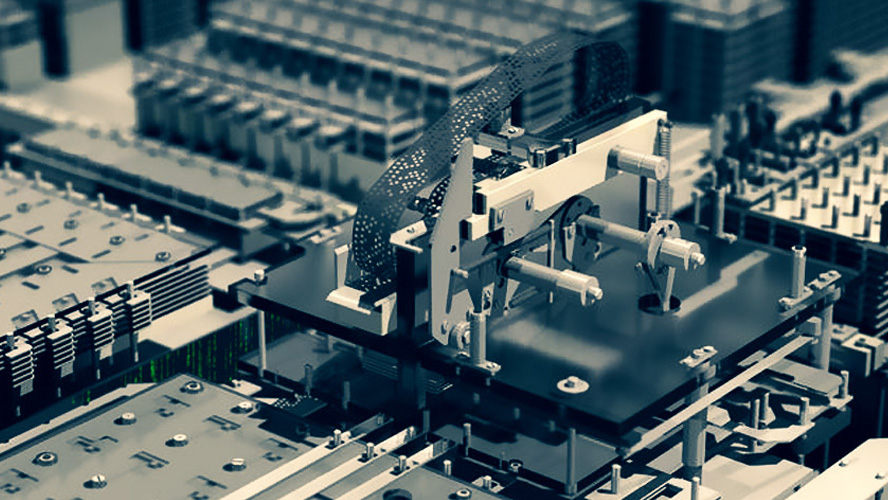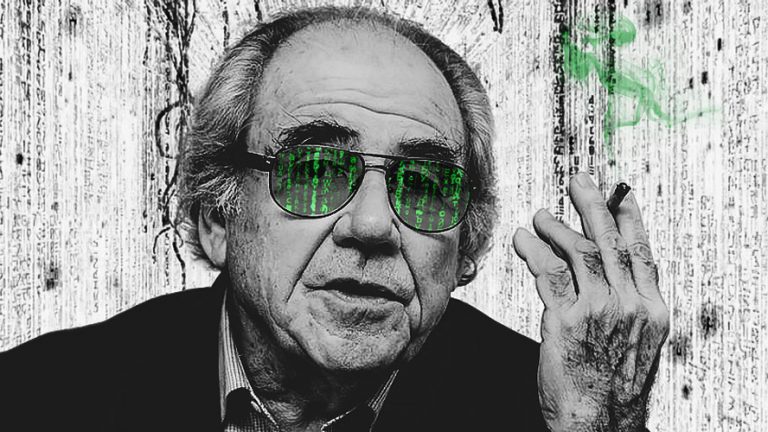Lev Manovich’s idea of Cinema and the Digital Media originated from the concept that modern digital computers were born out of cinema. It aims to compare cinema to Konrad Zuse’s machine to make the idea more accessible. Manovich defines cinematography as the art of writing motions, which involves recording and storing visible data in a material form, much like a movie camera. The recorded data is processed in the laboratory through various steps, then read and displayed on the screen using a projector. In digital machines, the program is written on an external medium where it can be controlled, with films punched in Zuse’s machine, while they are stored on a hard disk in modern computers. Therefore, the storage medium (punched film and hard disk) and an encoding method (chemo-optical storage, punched binary holes, and magnetic binary data) are significant components of both the digital machine and cinema.
Given Konrad Zuse’s interest in the visual arts, their influence on the invention of digital machines and the comparison between the performances of Zuse’s digital machine and cinema, Manovich’s technological interpretation of the Oedipus complex – based on which the child (digital machine) murders his father (cinema) – sounds acceptable. In a non-tragic twist, this forms the basis for the integration of media.
Today, fifty years since Zuse’s invention, modern media not only allow for the storage of photos, graphical images, motion pictures, sounds, and texts in a dynamic material but also provide for the creation of realistic three-dimensional images, sounds, and interactive virtual spaces. This new form can be defined as the conversion of numerical codes into a basis for storage in digital machines. These codes can be processed and interpreted. This new form involves a substantial change. For instance, in media such as photos, films, and texts, the original work can be referred to due to its physical essence. However, when these works are turned into numerical codes, their substantial essence becomes inaccessible, and we can only view the numerical codes.
“Neo: Do you always look at it encoded?
Cypher: Well, you have to. The image translators work for the construct program. But there’s way too much information to decode the Matrix. You get used to it. I don’t even see the code. All I see is blonde, brunette, redhead.” (The Matrix, 1999)
The reason for emphasizing cinema’s role in this text is due to Manovich’s idea about its fundamental role in the history of the computer. Additionally, cinema’s characteristics and features have helped it become the most influential medium of the 20th and partly the 21st centuries. Over a century, cinema has gradually prepared its global audience to accept the transformation of media and has helped us understand the subsequent features of digital media. As a result, many people experienced the digital revolution as a gradual evolution. Cinema played a vital role in making people accept the modification of photos (Vanvolsem, 2011, 154), even replacing the original photos with motion pictures in some cases. It reduced the accepted reality to the reality shown by the motion pictures and developed it. Cinema improved the vision of its audience and enabled them to look at the world beyond their mechanical eyes.
“I am cinema-the eye. I a mechanical eye and I show you a world that only I can see. Free from the limits of time and space, I adapt myself to any or all parts of the word and I can also record them. My mission is to create a new image of the world, and thus I can discover the unknown world by taking a new approach.” (Zabeti Jahromi, 2009)
In his article, Manovich discusses the significant role of cinema in introducing several digital concepts such as sampling, random access, and simulation. A movie camera or a video camera records images of reality shown to the camera by sampling. The number of samples is limited by the minimum duration of the images on the human retina. For instance, a 35mm roll film has 24 frames in a second, and this continuous timeline can be recorded through discrete sampling by recording 1/24-second film frames. Similarly, digital machines use the sampling technique to convert and store analog data such as images and sounds (Fig. 2-3) (Manovich, 1995). In digital images, the number of pixels in the horizontal and vertical directions determines the precision of the sampling process. In digital sound, the level of voltage at specific intervals determines the precision of the sampling process.
In analog films, the linear sequence of images is maintained. The frames can be displayed sequentially over time, and to access a particular segment of the film, the frames must be skipped at the speed determined by the video player. However, with animated or still digital images, immediate or random access is possible, and the person can access the desired part of the sequence or an image immediately.

Figure (2-3): The conceptual method of sampling during the conversion of images or sounds to numerical codes (the sound diagram is adapted to the image type) (Oja and Parsons, 2008: 198)



